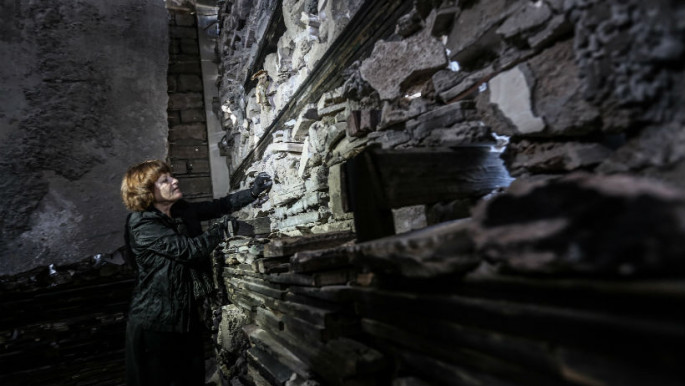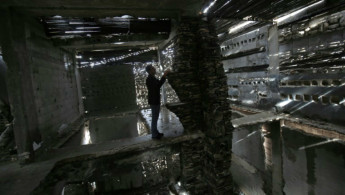Rebuilding hope: Destroyed Gaza home becomes temporary art installation
This might not be a typical venue for an art installation, more accurately, it is not somewhere which is usually chosen by an artist to display their talents.
But Dutch artist Marjan Teeuwen chose Gaza, of all the world's cities, to host her seventh installation - Destroyed house-Gaza.
This was not a mere artistic folly - the city's unrest, its history and its present have all added a political flavour. Politics, here, is inescapable.
Unlike her previous artworks in the Netherlands, Russia and South Africa, where she transformed houses slated for removal due to urban development into stunning artworks, in the war-battered Palestinian enclave, her work targeted a house that had already been severely damaged - in the 2014 Israeli war on Gaza.
"Man has an enormous power to destroy," noted the 53-year-old artist. "Likewise, man has an enormous power to construct. Why do not we stop destroying our world?"
After being permitted to enter the Gaza Strip on in September 2016, Teeuwen immediately started working on a new architecture installation in her series of Destroyed Houses. For three months, Teeuwen carefully arranged layers of debris and fragments of ashes, while she crammed boards of gypsum into an abandoned house.
 |
| Teeuwen rebuilt the house from the fragments it had been blown into, carefully arranged around the superstructure [Anadolu] |
The house, in the southern Gaza Strip town of Khan Younis, had been owned by the Shaath Family. She worked under the watchful eye of civil engineering staff and volunteers from the Palestinian Red Crescent.
The home was one of tens of thousands that sustained huge damage during Israel's 50-day military offensive in Gaza in the summer of 2014. The operation left more than 2,200 Palestinian dead and displaced nearly half a million residents during the fighting. Some 10,000 families remain internally displaced, with their destroyed houses awaiting rebuilding.
Not only has Teeuwen transformed this icon of destruction into a beautiful artistic piece,she has allowed the work to ask the questions brought up by the polarity between destruction and construction, chaos and order, and falling down and standing up to and with this neglected house.
Teeuwen insisted that the exhibition should be opened with dabke,a Bedouin Palestinian dance usually performed collectively. The music of dabke inspired Teeuwen, some of the attendees and the Red Cross volunteers all to join the singer in the dance. Their laughter boomed through doorless overlapping rooms from which the artist had tried to scrub the pain of its destruction.
 |
| The artist at work [Anadolu] |
Among the attendees was Ernst Van Alphen, a professor of Literary Studies at Leiden University, who was allowed to enter the Gaza Strip for three days. He believes that art, architecture, and memory are inevitably interconnected.
"Destroying a house means uprooting a memory; thus, the connections to the ancestors are being disconnected," he told The New Arab. "Teeuwen has brought order and life to this house, and she has restored the memories to the house and restored that of the family."
Rouwaida Abu Dagga, a civil engineer at the Palestinian Red Crescent joinedTeeuwen on her journey working on this sculpture.
"This work might be something greater compared to her previous works due to two factors: the short period Teeuwen was allowed to stay in Gaza, and the high cost of the material - albeit being second-hand materials," said Abu Dagga.
Within the next few months, the artwork will be destroyed as long-awaited donor money should soon be distributed and allocated for the family's home to be properly rebuilt.
But the destroyed house and its later artistic transformation will remain indelible in the minds of many here in Gaza.
Ghada al-Haddad is a freelance journalist based in the Gaza Strip. Follow her on Twitter: @GhadaHadad

![sudan women [getty] sudan women [getty]](/sites/default/files/styles/image_330x185/public/media/images/5019D7F4-52AF-4377-8A05-885D27476479.jpg?h=d1cb525d&itok=tKXV7r-W)
